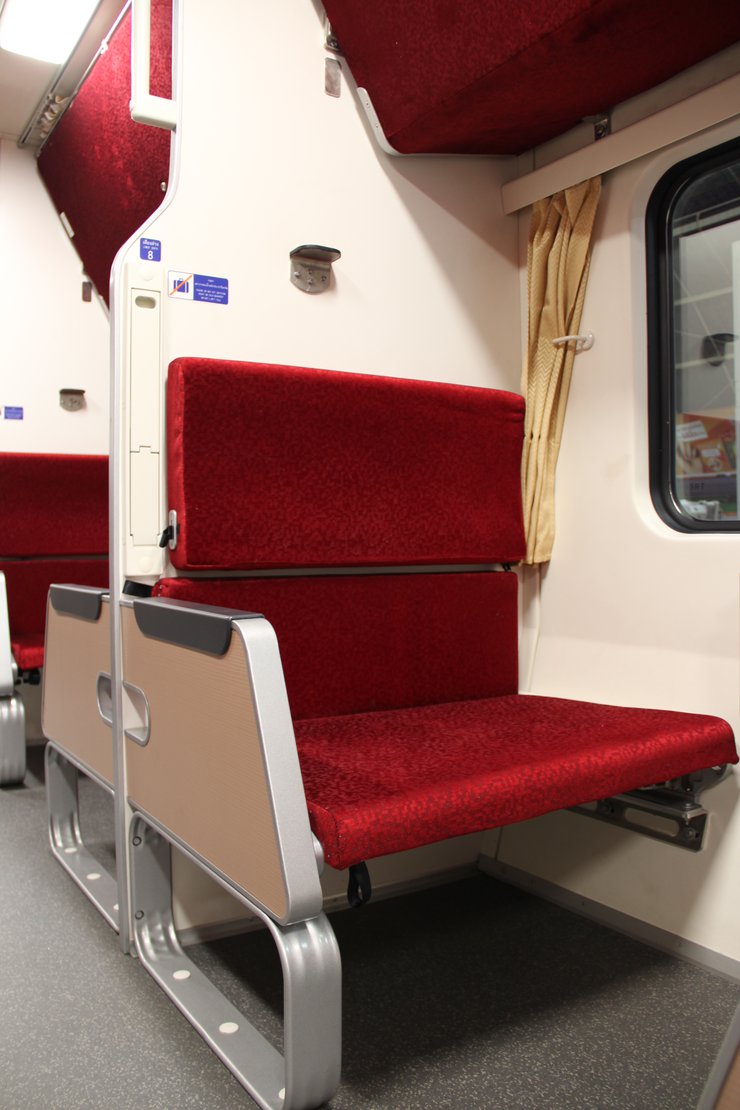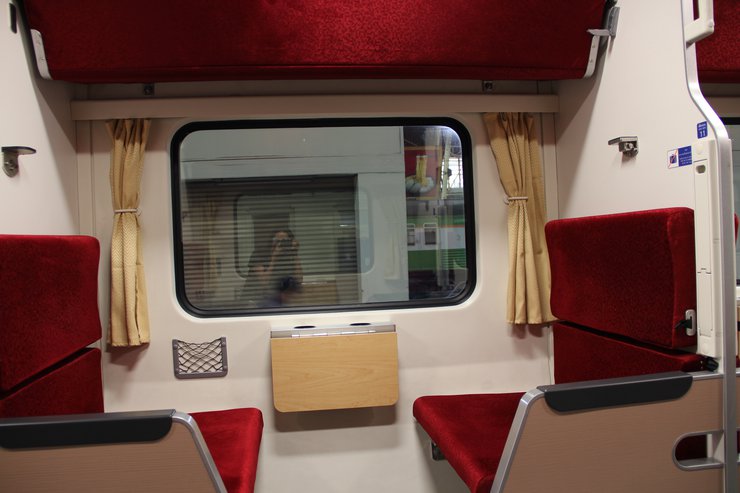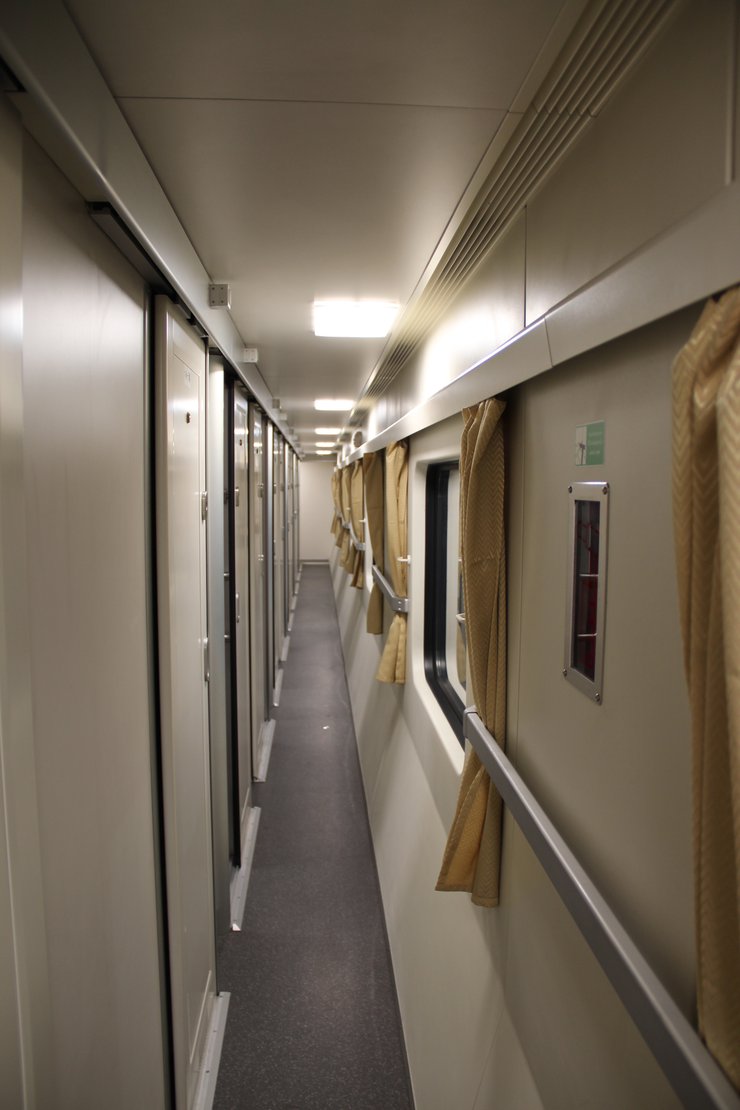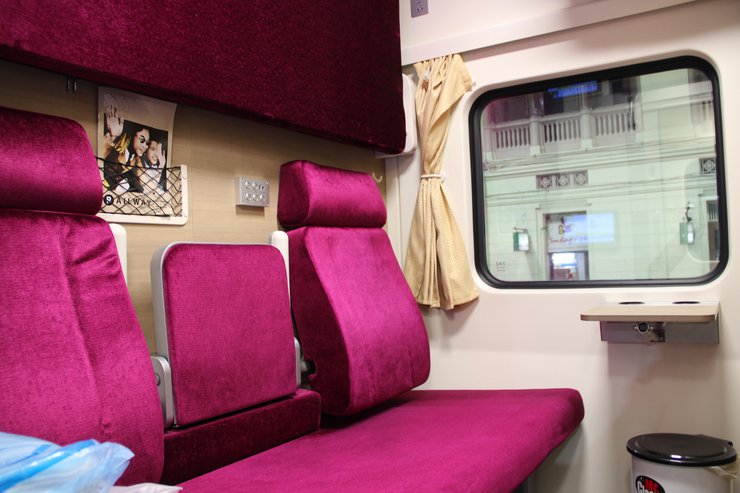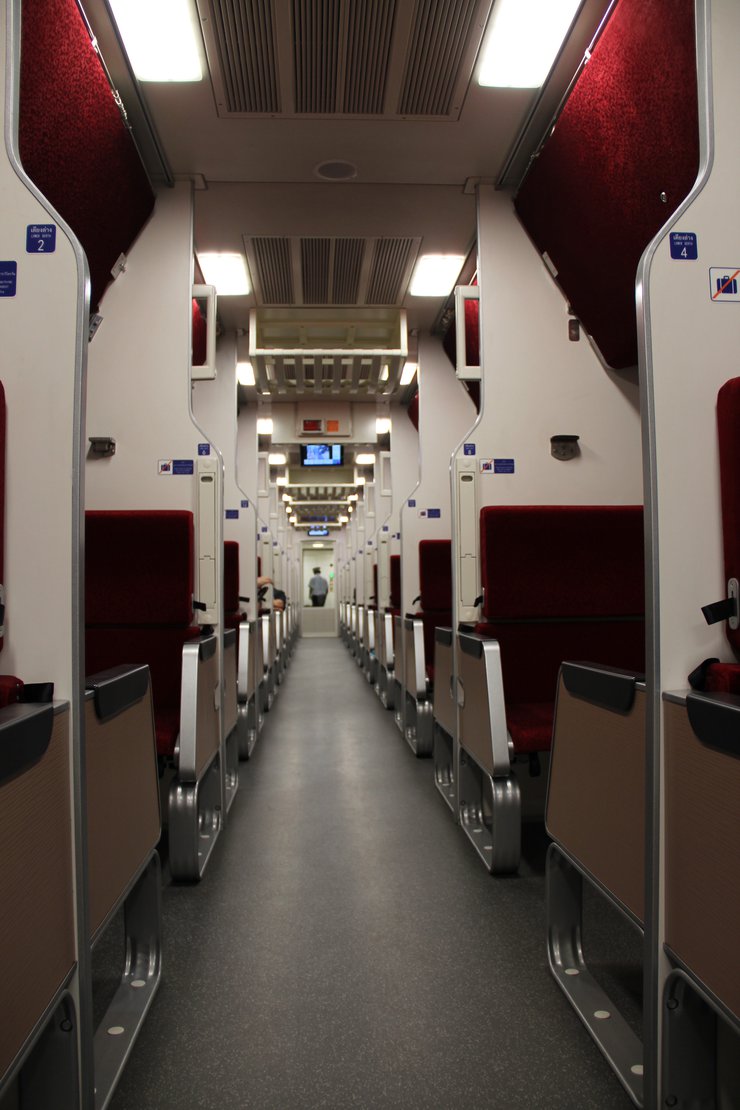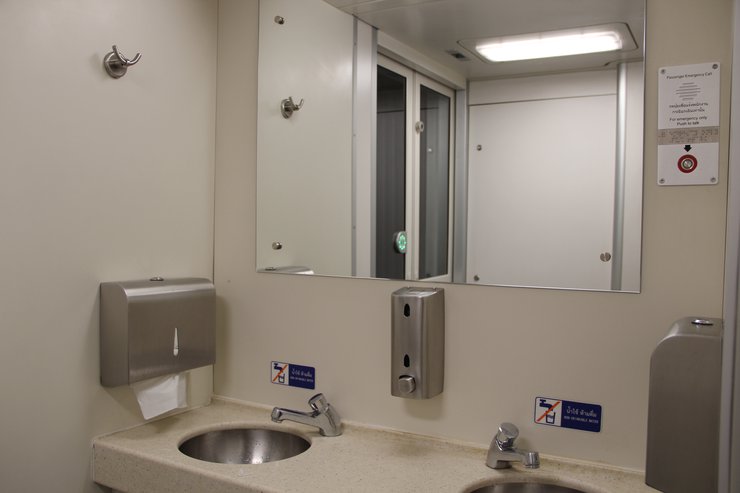Embarking on a journey always fills the heart of "ดินสอขอเขียน" with excitement. While visiting Chiang Mai is a familiar experience, this particular trip was unique due to the chosen mode of transportation: the train. The State Railway of Thailand recently launched brand-new sleeper trains on four routes: "Utarawithi" (Bangkok-Chiang Mai-Bangkok), "Isan Watanna" (Bangkok-Ubon Ratchathani-Bangkok), "Isan Marga" (Bangkok-Nong Khai-Bangkok), and "Daksinarat" (Bangkok-Hat Yai-Bangkok). For this trip, "ดินสอขอเขียน" opted for the "Utarawithi" line, with Chiang Mai as the final destination. The chosen option was a second-class air-conditioned sleeper car, with the upper bunk costing 791 baht and the lower bunk 881 baht. For those seeking greater privacy, a first-class air-conditioned sleeper car is available, with the upper bunk priced at 1,253 baht and the lower bunk at 1,453 baht. The first-class cars are divided into compartments for two people, each equipped with a TV screen, spacious seats, and a luxurious design. Additionally, a shower room is available for first-class passengers.


Let's take a look at the second-class sleeper car. "Pencil wants to write" chose the women's and children's compartment, so you can be assured of safety. In addition, every compartment of the train has a railway staff member looking after it. Inside the train, it is spacious, clean, and the bright red seats are brand new.



The bathrooms and sinks are exceptionally clean and well-maintained. However, the bathrooms are somewhat cramped. Notably, the train's new bathrooms employ a closed vacuum system, which is as advanced as airplane restrooms. This system effectively eliminates odor issues and conserves water.

The train departed from Bangkok at 6:10 PM, but it was about 10 minutes late. We were okay with that. As the train slowly pulled out of Bangkok station, the staff served us water in cute, compact cups, which were even branded by the State Railway of Thailand. For those who were hungry, there was no need to worry, as the train had a "pantry car" offering a wide variety of food, snacks, and hot and cold drinks. The train also provided free Wi-Fi, allowing social media enthusiasts to stay updated on the latest news.


As the train journey continued, around 8 pm, the staff transformed our seats into comfortable beds. Passengers who opted for the lower bunk enjoyed a more peaceful sleep, as they were not disturbed by the external lights. For those sleeping on the upper bunk, it is recommended to bring an eye mask, as the lights remain on throughout the night. Despite the sleep disruption caused by the lights, "ดินสอขอเขียน" felt reassured by the enhanced security measures.



At approximately 7:15 AM, the train safely arrived at Chiang Mai Station. This marked the end of our first lengthy train journey, which thoroughly impressed us.
Our first destination in Chiang Mai was the Queen Sirikit Botanic Garden, located in Mae Ram Subdistrict, Mae Rim District. To get there, we took a yellow songthaew (shared taxi) from the Chang Phuak Bus Terminal. However, upon inquiring with the driver, we learned that the Chiang Mai-Mae Rim route did not reach the botanic garden. Therefore, we disembarked at Wat Mae Rim and transferred to another songthaew bound for Mae Rim-Samoeng.
Despite the arduous journey, we persevered and finally arrived at the garden. Before entering, we had to purchase admission tickets for 40 baht each. As we didn't have a car, we opted for the garden's tram service, which cost 30 baht per person. The tram took us to the main tourist attractions, but we specifically requested the driver to take us to the "Canopy Walkway".

The tram then took us to the "Canopy Walkway," a steel walkway 20 meters above the ground that stretches over the treetops for approximately 400 meters. You will encounter a forest of three-leaf pines and various flowers that bloom during the winter. The path has some ups and downs, and there are sections with glass floors, allowing you to see the trees below clearly. It was both exciting and thrilling. At the end of the walkway is a viewpoint with stunning views of the mountains and trees, offering a sense of tranquility.




Our next destination is the "Grand Canyon," formed by excavating open land to sell topsoil, leaving a green pool of water below. This unique and picturesque landscape resembles the Grand Canyon abroad, making it a trendy tourist spot in Chiang Mai.



Thrill-seekers can jump from a high cliff into the water below, or relax on a floating platform, making this a popular destination for international tourists.
We then headed to the "Wat Phra That Doi Kham", home to the "Luang Pho Tan Jai", renowned for its sacredness. Both locals and visitors alike hold it in high esteem. Moreover, it is the oldest temple in Chiang Mai, with a history spanning over 1,300 years.


**"Luang Pho Tan Jai"** was built during the reign of King Kuena, the king of the Lanna Kingdom. It is very famous for its sacredness. People from all over the world come to pray to him. When they are successful, they will come back to offer jasmine flowers to make merit. Besides Luang Pho Tan Jai, there are also Phra Pang Phet Lok, a large Buddha statue, the shrine of Pu Sa and Ya Sa for people to worship. After praying to the Buddha, don't miss the panoramic view of Chiang Mai city, which stretches as far as the eye can see.



Our final destination for this trip is "Baan Kang Wat", a local-style shopping center. The project is designed in a simple style, emphasizing exposed concrete mixed with wood. Inside, there are many shops for you to stroll, shop, and taste at your leisure. There are cafes, restaurants, postcards, souvenirs, local products, and artwork. It is another place that photographers should not miss because there are many cool corners to take pictures.









The train journey to Chiang Mai by "ดินสอขอเขียน" has come to an end. Stay tuned for season 2, which will focus on restaurants. Thank you.
Follow "Dinso Khorkhian" for food and travel stories at www.facebook.com/EatAndTravelWithTT.
ดินสอขอเขียน
Friday, October 4, 2024 3:20 PM



